Virtual influencers, the new trend in social networks
Storytelling is the divine art of conveying anecdotes and connecting people with meanings. Story-telling and fiction have always dictated the thought of the masses. The world has transitioned through many forms of storytelling. Mass media and advertisement emerged from traditional story-telling. This further progressed to the internet and social media. Social Media networks reached far-fetched remote areas. Social networks led to the emergence of influencer marketing. The latest addition to this circle of influence is Virtual Influencers. They are virtual storytellers, using digital platforms for their message and meaning. Virtual Influencers are a peek into the intelligence and potential of man and machine.
Who are Virtual Influencers?
Virtual influencers are the latest trend in the influencer marketing campaign. When one glances at it, virtual influencers feel like regular influencers on the web. The reality is contrary to that.
Virtual influencers are fictional computer-generated characters. They have human-like traits, physically and socially. Virtual influencers are AI-produced beings, having the following characteristics:
- Virtual Influencers derive inspiration from real-life human beings, cartoon characters.
- Virtual Influencers can be an amalgamation of a unique animated character idea.
- They are designed and curated by either an individual or a group of individuals.
- They do not have their own thinking capacity or creative ability.
- These influencers are brand entities, sometimes created for a specific brand and product.
- They exist separately from their creators/designers.
What is the difference between real and virtual influencers?
The main characteristics of real influencers are:
- Real influencers are actual human beings who have a huge fan following on digital platforms.
- Real Influencers have their own creative identity and aesthetic theme.
- They are flesh and bones, and thus add the touch of ‘human connection’.
- They are representative of the current marketing trends.
- Real people are more likely to commit naive errors. These errors also become difficult to remove from the reputation.
In contrast to real influencers, virtual influencers have the following features:
- Virtual Influencers exist in the digital world – in terms of algorithms, designs and layouts.
- They do not have their own creative outlet. They are the product of a single individual or a group of dynamic people.
- Virtual influencers present a peek to the future.
- Brands hold more power over the layout of promotional activities. The virtual influencers add status tag to the campaigns.
- Relatively it is easier to cover up for any miscommunication in the promotional activities.
The differentiating line between real and virtual influencers is not well defined. Both influencers hold a large following and hold status in society. Brands approach both, and both are brands in themselves too.
Brands can move towards virtual influencers. The added advantage is that there are fewer chances of delay and errors. Virtual influencers are separate entities from the designers or creators that work on them, just like how a formal business functions. Even though virtual influencers do not equate to real ones, their following is almost matching each other.
Puma created a virtual character, Maya for the promotion of their new gear and it matched the levels of real online influencers. These influencers are like typical influencers – visiting different places, getting pictures in different locations, interacting with the audience, and more. They also need roughly 10k followers to be labeled as influencers, just like real-life influencers. They need to have a loyal community of fans. This community must be cohesive, interactive, and engaging.
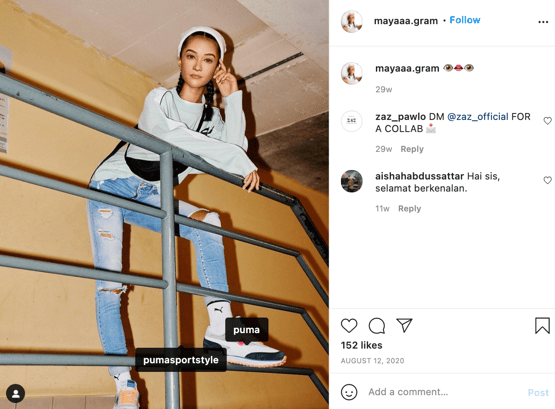
The prototypical case of Maya is quite encouraging and she was the model generated from combining facial features from over a thousand Southeast Asian faces. Such influencers are also less likely to commit cultural blunders and to raise conflict. The minute facets of culture are ingrained in their algorithms.
Who creates Virtual Influencers and what social networks are involved?
Virtual Influencers are created by artists, graphic designers, animators, and digital creators. Anyone with an understanding of design technology can create a digital avatar.
Different brands sponsor these virtual projects. Some brands pay artists to create virtual influencers for specific campaigns whereas some virtual influencers are used for multiple branding purposes. Most of these campaigns are based on social media platforms. Instagram is the largest market for virtual influencers, followed by YouTube.
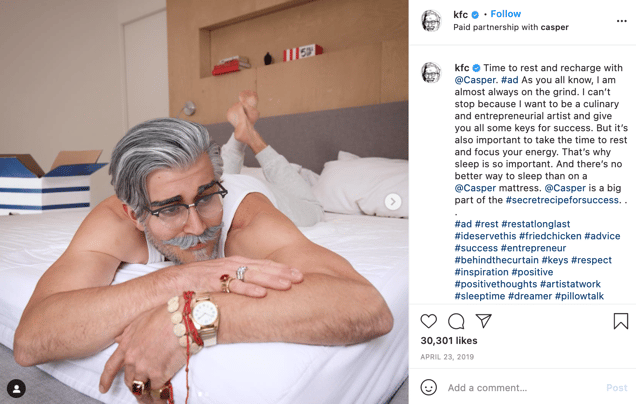
After seeing their success in the networks, virtual influencers have expanded their presence in more campaigns and options with brands. KFC created a CGI Influencer resembling the infamous Colonel Sanders. This is quite a strategic use for promoting the brand alongside different products falling under the brand. Colonel Sanders’s character holds a special value and uplifts the brand value. With CGI, this character turns evergreen.

Nowadays, these accounts are no longer limited to a singular product or service. These accounts are used to promote different lifestyles or a certain style of doing things. All age groups follow such accounts. It is a ‘new’ experience for the majority of the crowd. Millennials are not yet familiar with virtual influencers. This is not a hurdle as social media runs on the young age segment. The concept of a robot as a statement figure is quite lucrative, especially for Generation Z.
Why are Virtual Influencers rising in popularity?
This decade is the witness of the growth of virtual influencers. There is a multitude of reasons behind the rise of this influencer technology.
Validation – Virtual Influencers promote different lifestyles and actions. When these meet with the real world behaviors, individuals feel validated. Even though, it is known that virtual influencers do not exist in reality, the validation is quite powerful.
Aspiration – The members of the young generation often derive aspirations from influencers. Influencers play the part of a ‘role model’. Virtual Influencers also fall under aspiration.
Trends – Human beings are trend-followers. This is the reason why social media is so engaging and addictive. It is also the reason that will lead to the rise of virtual influencers. Once dialogue initiates around it, everyone is bound to follow a virtual influencer.
‘Cool’ Category – It does seem ‘cool’ to be connected with a virtual avatar. The mere thought of an identity that exists in abstraction is attractive. A huge followers base is directed through the ‘coolness’ factor.
What are the advantages of choosing virtual Influencers?
A major advantage for brands for choosing virtual influencers is the ‘certainty’. The creative liberty and the unpredictable nature of human beings do not exist in the programming of virtual influencers. Virtual influencers follow a theme and they stick to it. They are relatively less likely to create errors or create content that has the potential to hurt the sentiments of any community. There is another context of ‘newness’. The concept of virtual influencers is still growing fresh. It is currently only promoted in south Asian countries, with China and Japan being the primary contenders. America is the brainchild, with the largest number of virtual influencers on the web. Most of the influencers fall under the age range of 18-28. There are more female virtual influencers than male ones.
Famous Virtual Influencers
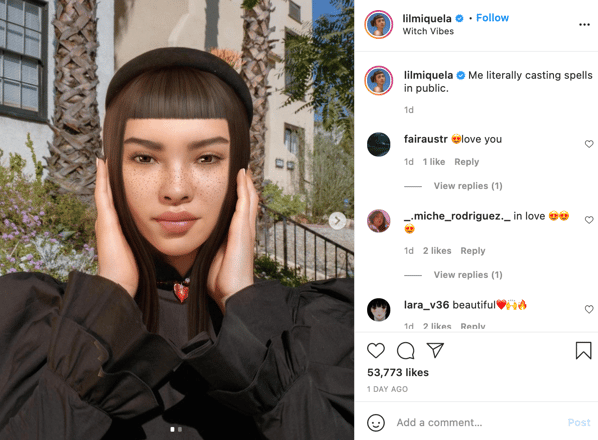
Lil Miquela, the most renowned fictional character, started as an Instagram project in 2016. Ever since she has gained over three million followers on Instagram. She even has a YouTube channel. Her following is not just rooted in vanity. There are social and political opinions, combined with brand promotions.
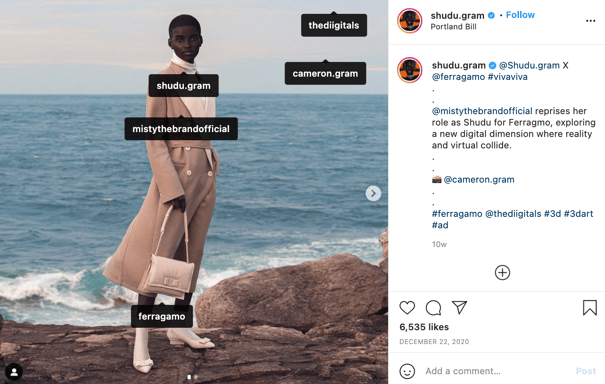
Another interesting virtual influencer is Shodu. Shodu is a brainchild of a photograph, Cameron James. This photography project shocked the world when Rihanna shared Shodu’s picture. The digital model has been on a growth curve ever since. She has signed deals with luxury brands, including Balmain.
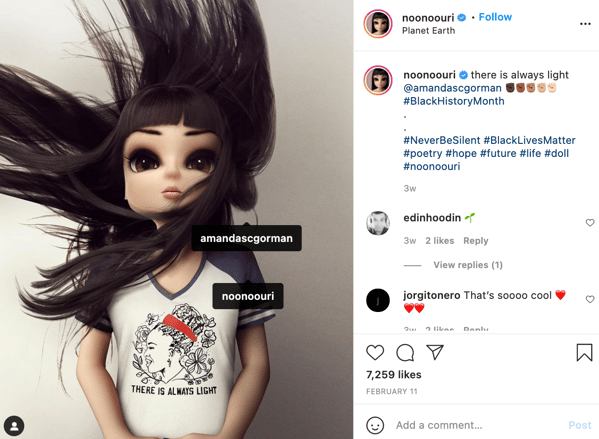
A very fascinating virtual influencer is Noonoouri. Unlike previous influencers, Noonoouri does not completely resemble a human being. It is evident from her looks that she holds a virtual identity, yet her fan following is quite devoted. She is invested in many social causes such as veganism, anti-pollution campaigns, and climate change activism. She is currently the fastest-growing virtual influencer on the web.
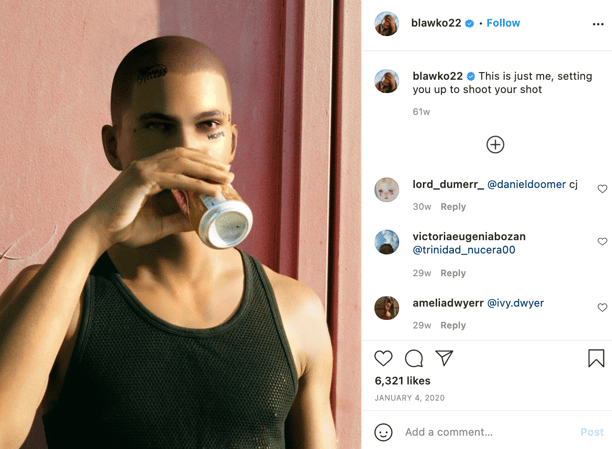
Blawko is a very interesting virtual influencer. He is created by Brud (the creator of many virtual characters, including Miquela). Blawko holds a fancy lifestyle, even promoting a virtual community. He is imbibing social relations, like being friends with other virtual influencers such as Miquela. Through Blawko, there is a step towards a community of virtual characters. He is a member of the pop culture that resides in LA, and he is often seen promoting related deals and brands.
Other than existing virtual influencers, brands can create their own virtual influencers if they do not find any fit influencers on the web.
They can create one avatar for a new campaign or use one for all the products. Many brands are opting for this option, and this is how virtual influencer marketing is scaling the levels. Brands can use them as per their team of creative geniuses.
Brands can use their R&D on building suitable characters instead of finding the right virtual/real influencers for their product and the brand.
The future of Virtual Influencers in Influencer Marketing
There is a high projected growth of virtual influencers in the coming times. Brands should venture into influencer marketing – especially virtual influencer marketing.
The graphics technology, slow motion graphics, CJI are continuously progressing. In the future, there are bright prospects for advanced virtual identities. Virtual influencers will move to more platforms, including journalism, reporting, and more.

The trends of influencer marketing suggest that virtual influencers will stay around for a decade before hitting a peak. A bonus is creative liberty at hand. Virtual influencers follow an algorithm and brands do not have to wonder about how the campaigns will turn out to be. Famous players of influencer marketing – Lil Wavi and Lil Miquela do not have their own creative sense. Even without a tangible identity, these influencers are able to impact a large portion of their following.
With the projected growth, brands must start including virtual influencers in their branding plans. Major players of the market can develop their own virtual influencers. Multiple virtual influencers are also growing as there is growth in a virtual community. No doubt, there are real influencers who will pose as a threat to the influencers segment, but their proportion is reaching a saturation point.
The coming modes of marketing and advertisement include Virtual Reality, Augmented Reality, Virtual Identities, 5D design, Interactive gaming. Given such developments in the coming times, Virtual Influencers are no doubt worth investing in.
Tags:




















%20and%20How%20Can%20They%20Benefit%20Your%20Brand%20article.jpg?length=628&name=What%20Are%20Key%20Opinion%20Leaders%20(KOL)%20and%20How%20Can%20They%20Benefit%20Your%20Brand%20article.jpg)








